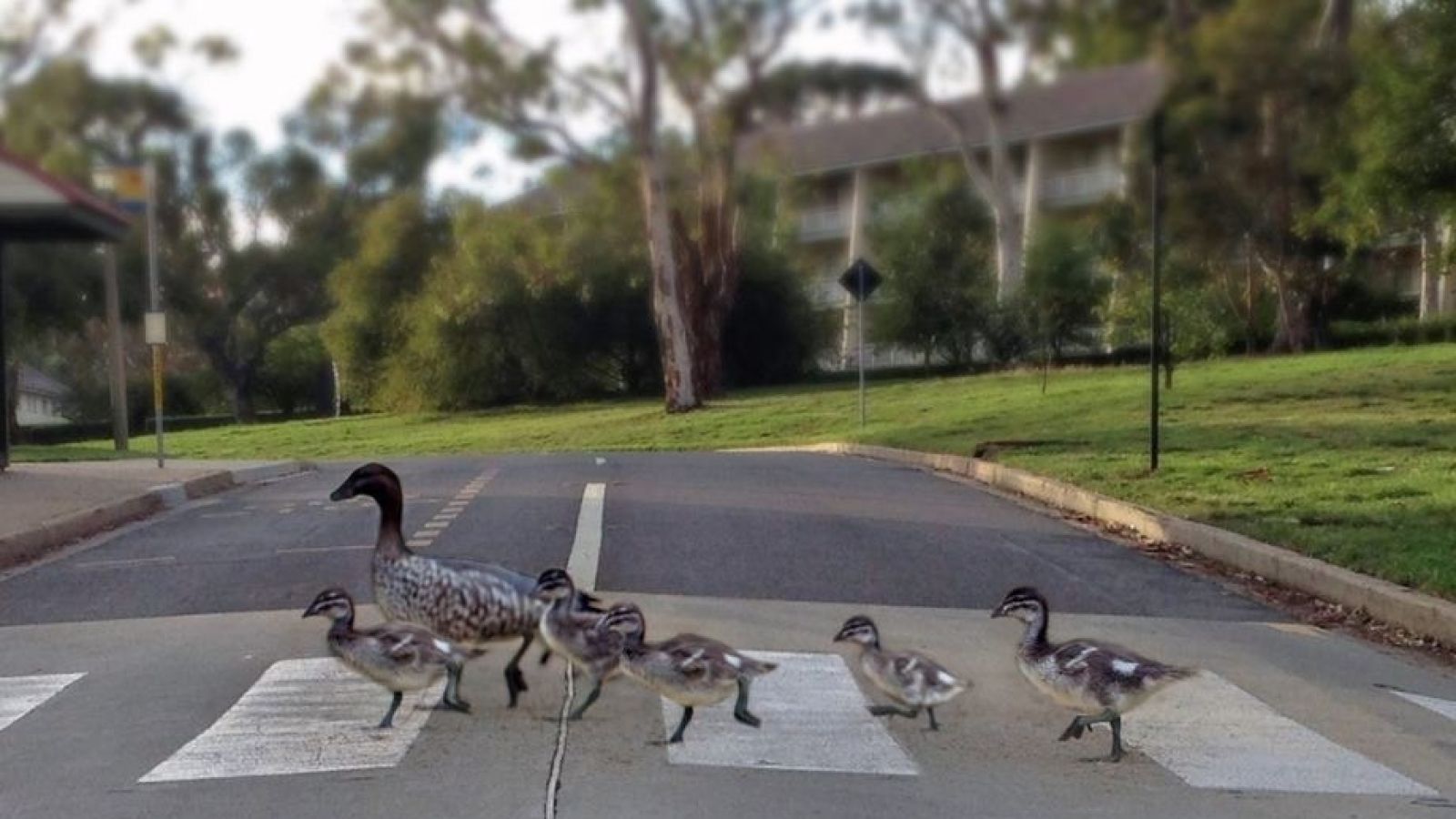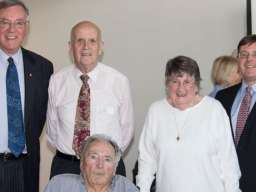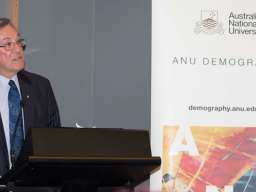School of Demography launches at ANU

Head of School, Professor James Raymer, and ANU Vice Chancellor, Professor Ian Young AO, celebrate the new school's launch
The ANU School of Demography is the only one of its kind in Australia, having been one of the university’s foundation disciplines for more than 60 years. School and university officials aim to ensure the new School, formerly the Australian Demographic & Social Research Institute (ADSRI), keeps its place as the Asia Pacific’s leading demography centre.
“Demography provides a unique perspective and empirical foundation to inform social policy and the study of social, economic and environmental change,” Head of School, Professor James Raymer, said.
“The discipline focuses on the study of the size, distribution and composition of populations, and the fertility, mortality and migration components that drive such changes throughout the world in a variety of social and economic contexts.”
In a sense, it’s a return to the School’s roots. It began in 1952 as the Department of Demography. Founding professor, WD (“Mick”) Borrie, was appointed the university’s first Research Fellow in Demography in 1949, the first appointment to the Research School of Social Sciences.
Borrie was a former president of the United Nations Population Commission – one of many senior posts ANU demographers have held. Others include two presidencies and three vice-presidencies of the International Union for the Scientific Study of Population and two of the three presidencies to date of the Asian Population Association.
“We have strength in all aspects of demography, while our researchers are engaged with studies in Australia, Indonesia, China, Europe and South Africa,” Head of School, Professor James Raymer says.
“Calling our unit the ‘School of Demography’ publically acknowledges these strengths and promotes our strategic vision.”
Vice Chancellor, Professor Ian Young AO, said demography was one of the university’s principal research areas and would be crucial to helping understand China’s population challenges, for example.
“These are a few elements in which demography affects the world and why it’s so important to the activities here at ANU,” Professor Young said.
“In light of this, it’s a perfect time for ANU to further develop its demography studies by the launch of this School.
“It’s clear that demography research has many applications to many of the research areas at this university and I certainly continue to encourage this new school to spread its knowledge across the institution and further develop those multi-disciplinary links within the university.”
Former ANU demography head, Professor Peter McDonald, said a 2009 ranking by demographers of their top 40 peers featured five from the ANU, including Jack Caldwell, program head between 1970 and 1988.
“Throughout its proud history, ANU demography has always had its finger on the pulse of the important policy issues of the day, both in Australia and in other countries, and in so doing gained the reputation for its preeminent work on theory,” Professor McDonald said.
Some of that work includes the ongoing Transitional to Adulthood study in Indonesia, led by Dr Iwu Utomo and Professor McDonald, which follows more than 3,000 young Indonesians.
They and Robert Sparrow are also running an ARC-funded study into the needs of older people from rural villages in Indonesia.
Dr Ann Evans and Dr Edith Gray are working on an ARC-funded study that analyses inequality toward family formation.
“We’re looking at education, occupation, rural or country background and religion – things that differentiate people in the community and influence decisions on starting a family,” Dr Evans said.
“Using HILDA, the Household Income and Labour Dynamics in Australia survey, we’ll be analysing entry into parenthood over the last 15 years.”
Aside from research, ANU demography has also produced more than 500 graduates in social research, most from developing countries. Former scholarship holder, Ateeq Zaki, spent two years doing a Master of Social Research and in was 2015 appointed a social development specialist with the World Bank in his home country, Afghanistan.
The School’s Emeritus Professor Terence Hull, current President of the Asian Population Association, said the ANU has a major role to play in the region to address a “crisis” affecting national demographic research and training centres.
“Cohorts of demographers trained in the 1970s and 80s are passing on. Those who have died or retired aren't being replaced by people with similar skills,” Professor Hull said.
"Posts are disappearing from university budgets."
“In Australia, we’ve seen losses of demographers, for example at Monash and Adelaide University.”
Professor Raymer said the School will reinvigorate demography in the ANU system.
“This School comes at critical time as more than ever we need sound demographic research to address the major issues of today and to prepare as best we can for Australia’s future and its position in the world.”
Meet the growing demand for expertise in high-level social research with a Master of Social Research at ANU.

